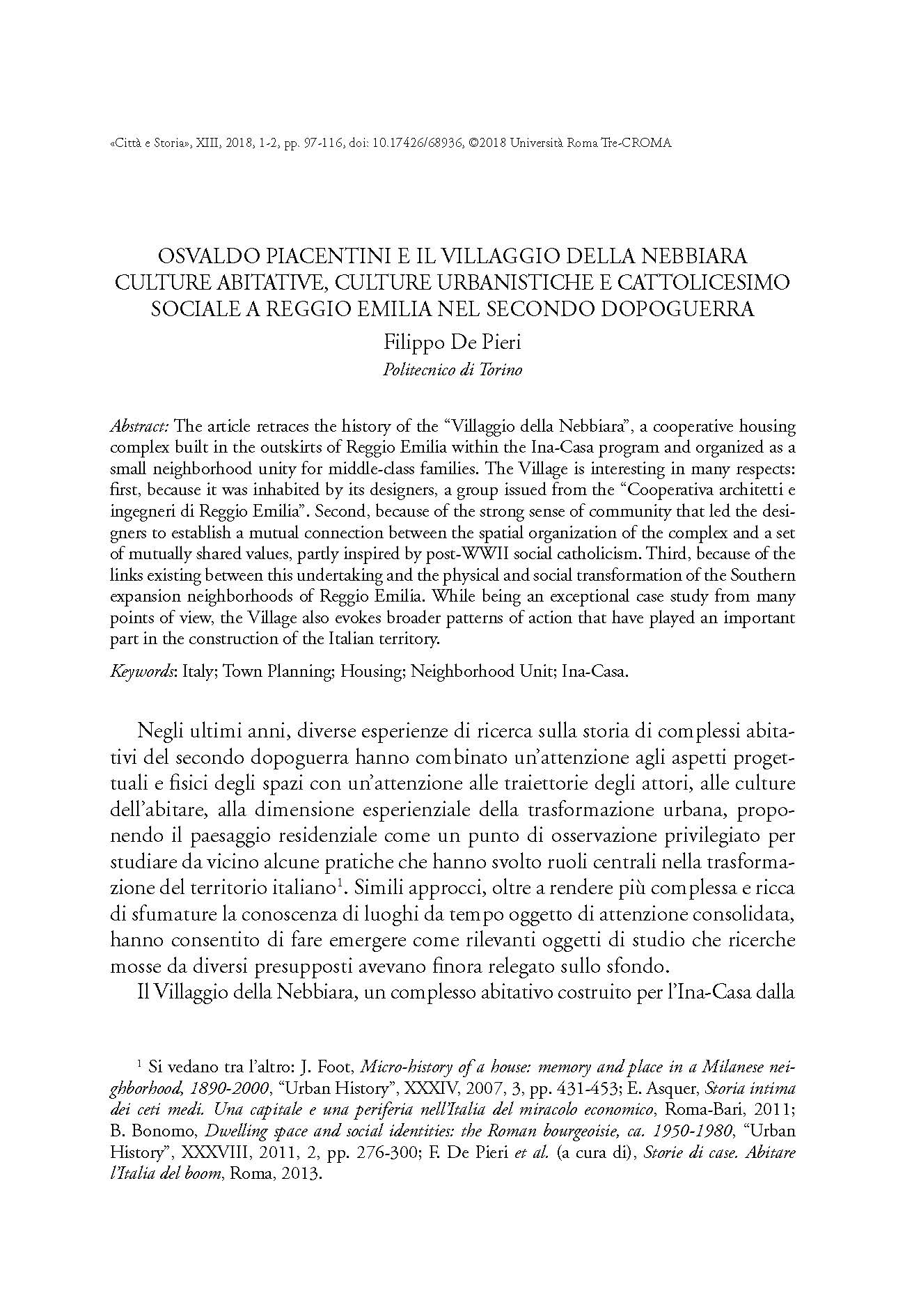Osvaldo Piacentini e il Villaggio della Nebbiara. Culture abitative, culture urbanistiche e cattolicesimo sociale a Reggio Emilia nel secondo dopoguerra
6,00 €
The article retraces the history of the “Villaggio della Nebbiara”, a cooperative housing complex built in the outskirts of Reggio Emilia within the Ina-Casa program and organized as a small neighborhood unity for middle-class families. The Village is interesting in many respects: first, because it was inhabited by its designers, a group issued from the “Cooperativa architetti e
ingegneri di Reggio Emilia”. Second, because of the strong sense of community that led the designers to establish a mutual connection between the spatial organization of the complex and a set of mutually shared values, partly inspired by post-WWII social catholicism. Third, because of the links existing between this undertaking and the physical and social transformation of the Southern expansion neighborhoods of Reggio Emilia. While being an exceptional case study from many points of view, the Village also evokes broader patterns of action that have played an important part in the construction of the Italian territory.
The article retraces the history of the “Villaggio della Nebbiara”, a cooperative housing complex built in the outskirts of Reggio Emilia within the Ina-Casa program and organized as a small neighborhood unity for middle-class families. The Village is interesting in many respects: first, because it was inhabited by its designers, a group issued from the “Cooperativa architetti e
ingegneri di Reggio Emilia”. Second, because of the strong sense of community that led the designers to establish a mutual connection between the spatial organization of the complex and a set of mutually shared values, partly inspired by post-WWII social catholicism. Third, because of the links existing between this undertaking and the physical and social transformation of the Southern expansion neighborhoods of Reggio Emilia. While being an exceptional case study from many points of view, the Village also evokes broader patterns of action that have played an important part in the construction of the Italian territory.

